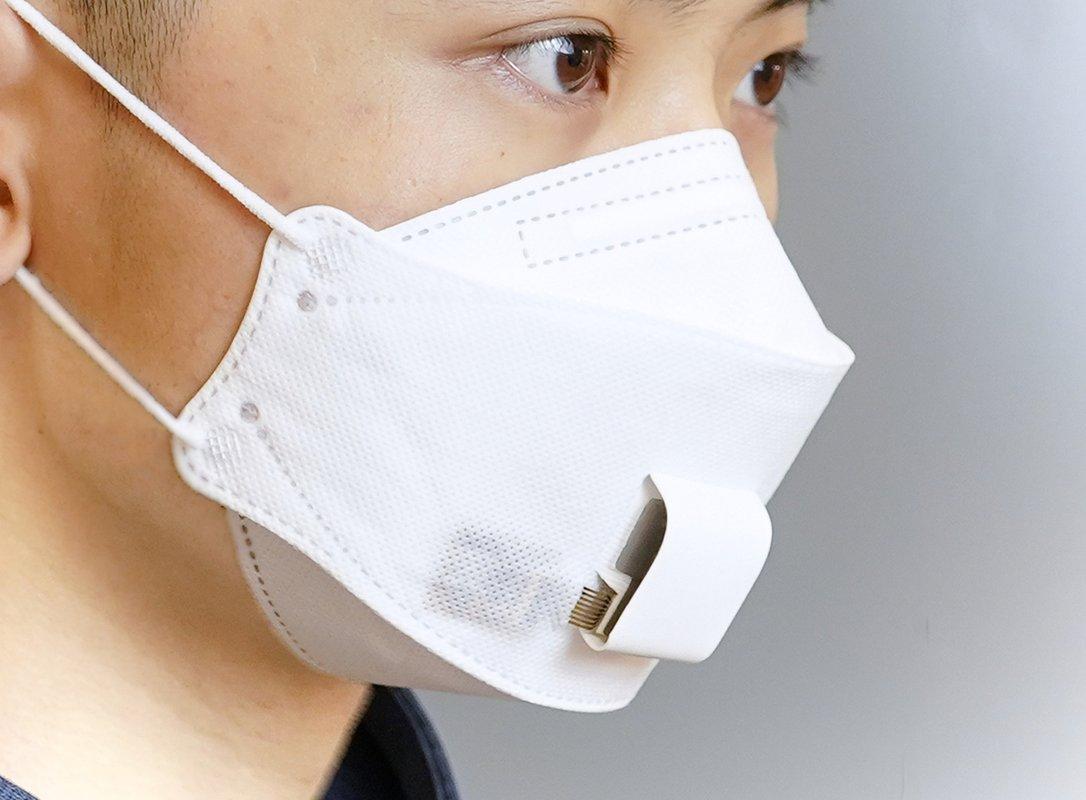This Sunday, Olivier Véran mentioned the possibility of soon being able to drop the mask outdoors, while some are advancing the date of June 30. Good news for our skin, after more than a year of compulsory wearing.

- Mask-related skin problems have given rise to a neologism: “mascné”, the contraction of mask and acne.
- Many types of dermatitis are aggravated by wearing a mask.
- It is recommended to wash your face with a mild soap and to apply an emollient cream before putting on the mask, and to take “mask breaks” during the day.
The end of the obligation to wear a mask outdoors is approaching. This Sunday, Olivier Véran told BFM TV that the government is considering and studying the issue. “The French will not be asked to wear the mask outside for one day more than is necessary”, he underlined. With the arrival of summer, the vaccination campaign which is gaining ground, the progressive deconfinement which continues and the circulation of the virus which continues to decrease, the masks could well fall. “It is obvious that we will not let the French wear a mask in the middle of a dodger […] and have tan lines on the face”, added the Minister of Health.
Olivier Veran (@olivierveran): “The French will not be asked to wear the mask outside for one day more than is necessary” pic.twitter.com/NuZXTr2pgQ
— BFMTV (@BFMTV) June 6, 2021
Several types of dermatitis
The first beneficiary of the fall of the mask will be… the skin of the face! After more than a year of compulsory wearing, many problems have appeared, giving rise to a neologism: the “mascné”, for the contraction of mask and acne. On June 7, two British dermatologists from King’s College Hospital of London took stock in an article published in The BMJ Practice on dermatitis and other inflammations of the dermis to which it is linked. Designed to prevent micro-droplets from escaping, the surgical mask creates a warm and humid environment with breathing that puts a strain on our skin.
Beyond six hours, irritant dermatitis is the most frequent problem encountered. The latter usually appears behind the ears and on the top of the nose, where the pressure exerted by the mask is the strongest. People who suffer from atopic dermatitis are the most affected by this condition. The best is then to let the skin rest for a few hours. It may happen that some are subject to allergic dermatitis but this is rarer. It is the result of hypersensitivity of the skin to an allergen present on the surface of the surgical mask, such as formaldehyde, necessary for their manufacture. To treat it, you must apply a corticosteroid-based ointment and perform an allergy test to identify the allergen in question. The two dermatologists report that between 1 and 3% of adults have seborrheic dermatitis, a chronic inflammation of the skin. This is caused by the hot and humid environment induced by the mask which accentuates the red patches on the cheeks and chin.
Wash your face well and apply an emollient cream
Wearing the mask also causes the appearance or worsening of acne. In particular, it can aggravate so-called “vulgar” acne. Caused by the chronic irritation of the hair follicles, this type of acne is characterized by particularly painful pimples. The humidity-heat cocktail created by the mask, as well as its friction on the skin, makes the situation worse. For those affected, the two dermatologists advise using a retinoid-based cream for milder cases and heavier treatments for more severe cases. The beard worn by some men can also be an aggravating factor.
In conclusion, dermatologists recommend some good gestures to anticipate skin problems induced by the mask. They recommend washing your face with a mild soap and applying an emollient cream before putting on the mask. Placing a small piece of silicone at the level of the nose can also reduce the effects of friction. In addition, it is preferable not to wear the same mask for more than four hours in a row. If this is not possible, it is best to take regular “mask breaks” to limit irritation and the accumulation of moisture around the lower face. Finally, if complications continue, it is best to consult a dermatologist.
.

















